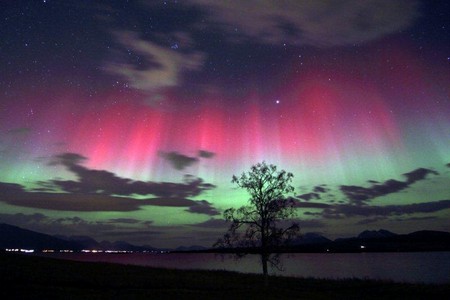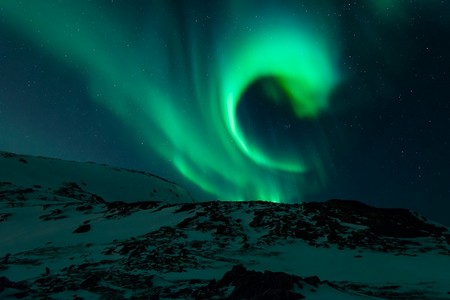Aurora - Dancing lights in the sky
For centuries, Auroras have been a great inspiration for myths and storytelling. Today, science can explain what causes the dancing lights in the sky, even though not every question has been answered yet.
Aurora borealis is the correct name for the phenomenon of Northern Lights. However, there is the complementary spectacle occurring in the southern hemisphere, which are called Southern Lights or Aurora australis. Since Auroras are most likely to be seen in the belt of 10° to 20° from the geographic poles, the Southern Lights mostly appear over the Antarctic continent and over open ocean and therefore are less known and less observed than their northern equivalents.
So, how do Auroras come into existence?
Even though the sun is about 150 million kilometers away, the charged particles emitted from its surface reach the earth’s atmosphere. However, the magnetic field of the earth deflects those particles which therefore only can enter the atmosphere at the weakest points of the field. Those are located around the magnetic poles, close to the geographic poles of the earth.
Having entered the atmosphere, these charged particles collide with the atoms and molecules in the air. Thereby, electrons in the atoms are raised into an excited state of higher energy. When “falling back” to their ground state, they emit the excess energy as photons, so to say light.
The wavelength of the emitted light and therefore the color we see in the sky depends on the element in which this process takes place. Oxygen emits green light while nitrogen causes red and blue. Now, anyone who knows that oxygen (O2) only makes about 21% of the air, while nitrogen (N2) makes up 78% might wonder: Why are most Auroras green???
In fact, the atmosphere consists of several layers with different compositions. Auroras are created in about 100-250 km above the earth’s surface, in the so-called thermosphere. There, atomic oxygen (O) makes a great part of the dominant components. That’s why most Auroras are green. In times of high solar activity, the charged particles of the sun can enter even lower layers of the atmosphere, where the amount of nitrogen is higher. Then we can see red and blue lights. Other rare colors depend on other elements and circumstances.

Auroras can be shaped in very different forms, from curtains, to stripes, arcs and even spirals, highly affected by the earth’s magnetic field lines.

The activity of the sun undergoes permanent variations and from time to time there occur so-called sun-storms. During these periods of extremely high solar activity Aurora borealis can be observed far more south of its usual locations. In the end of October 2021, Swedish news-channels announced particular high chances to see Northern Lights all over Sweden. Unfortunately, in the part of Sörmland, where I am located, the sky was entirely covered with clouds. For those who want to spot Aurora borealis as far south as Sörmland, it is important to keep your eyes towards the northern horizon as the lights won’t appear overhead as they do in higher latitudes.
Summary: Charged particles emitted from the sun reach the earth and enter the atmosphere at the points of lowest magnetic field activity. Through the energy of those particles, electrons in the air molecules are excited into higher energetical states. When falling back to their ground states, they emit photons that we can see as colorful Aurora lights in the sky.
Post sources:
- NorthernLightsCentre: https://www.northernlightscentre.ca/northernlights.html
- EarthSky: https://earthsky.org/earth/what-causes-the-aurora-borealis-or-northern-lights/
- Nyheter24.se: https://nyheter24.se/nyheter/inrikes/974260-geomagnetisk-storm-pa-ingang-chans-att-se-norrsken-over-hela-sverige
- TheAurorazone: https://www.theaurorazone.com/about-the-aurora/the-science-of-the-northern-lights/the-northern-lights-colours
- UCAR Center for Science Education: https://scied.ucar.edu/learning-zone/atmosphere/thermosphere
- Norsk Romsenter: https://www.romsenter.no/Laer-om-rommet/Solsystemet/Sola
- Aurora Wikipedia: https://en.wikipedia.org/wiki/Aurora
There are no reviews yet.